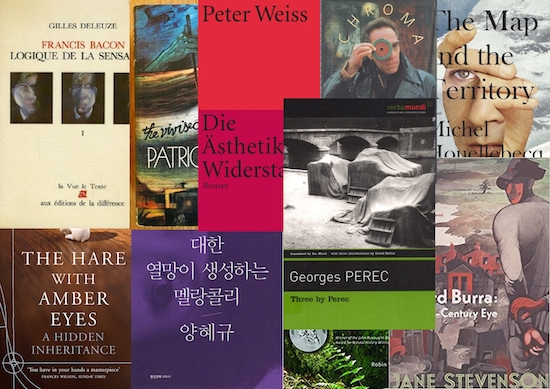I had wanted to be a fictional art critic. Not that I once wished to become, somehow, unreal, to exist as a fictional character in a book or a play or a film, part of whose backstory was a job as an art critic (though there have been a fair few of those). Rather, to paraphrase Gloria Swanson’s fading star in Sunset Boulevard, I would stay real; it’s the pictures that’d get fake. There was something alluring about the works of art summoned by works of fiction, they seemed to shimmer with a strange kind of perfection, unsullied by contact with the real. But how to put into words a work that already existed as a purely verbal creation? I seemed to be staring into an abyss. (And what would be the status of an artwork created as a plot point by a novelist for his book, which book is then adapted to the screen, which film then becomes a classic and it’s props and ephemera become the subject of a dedicated museum show – at what point do those objects become ‘real’ art works – if ever – and who would be their artist?)
In an age of churnalism and content farms, the old adage that a picture is worth a thousand words seems remarkably cheap. And yet it testifies still to a presumed primacy of image over word that would seem to be belied by the many artists who have turned to text in the century since Picasso and Braque first applied newsprint to their canvases. It would take a brave critic to insist upon the worth of their words over and above the works they set out to describe, but the artists of the Art & Language group, in May of 1969, were happy to put forward the claim that "this editorial, in itself an attempt to evince some outlines as to what “conceptual art” is, is held out as a “conceptual art” work.”
For some weeks now the world’s galleries and museums have been shut, their doors forcibly closed by the lockdown measures made necessary by states’ abject failure to respond to the coronavirus pandemic. Somehow though the art world seems to be busier than ever. Every day my inbox receives some new bulletin, some fresh missive in the form of links and texts and virtual exhortations and invitations. Having always seen myself – perhaps somewhat romantically – as something of an interloper here, a kind of British-accented Columbo bursting into private views in a dirty, rumpled old mac with "just one little thing that’s bothering me", I was curious which books – fictional or otherwise – the naturalised citizens of the art world were reaching for in order to sustain and inspire themselves in the absence of a ‘real thing’ once thought to have dematerialised. So I asked them (some of them. And some others). And this is what they said.
Gilles Deleuze, Francis Bacon: The Logic of Sensation
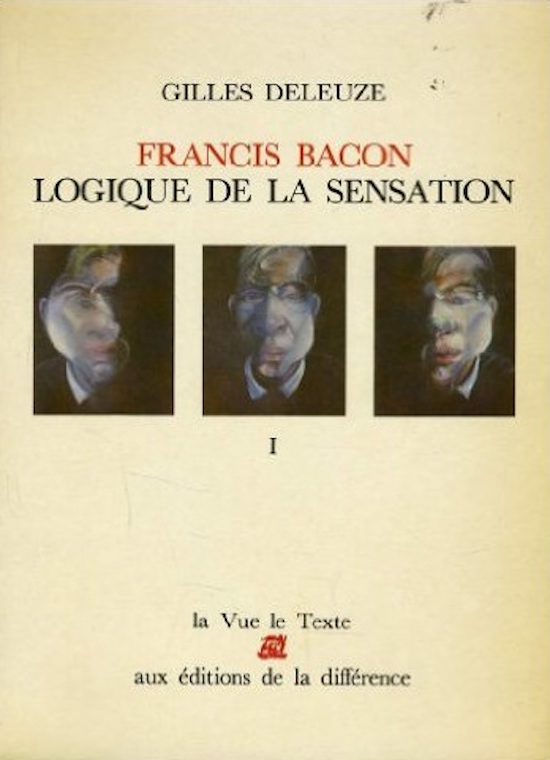
Gilles Deleuze’s Francis Bacon: The Logic of Sensation embodies a convergence of two figures that have allowed me to transcend my own being and immeasurably influenced my two primary methods of expression. I’m a writer and a visual artist – probably in that order – and Deleuze and Bacon are pillars in my aesthetic, cultural, and literary sensibilities.
Deleuze has said that he doesn’t write about art as a critic, but as a philosopher. He and his-cohort Felix Guattari defined philosophy as the conceptualisation of concepts, and thus, Francis Bacon: The Logic of Sensation must be understood as a work of philosophy. Deleuze analyses Bacon in a vacuum – there is no mention of the artists who actually influenced Bacon according to the artist himself – and instead Deleuze draws connections between Bacon and writers who Bacon may have had no interest in: Proust, Beckett, Kafka, Artaud, Burroughs (though it should be noted that Bacon was interested in Burroughs, there’s a terrific video on youtube of the painter and writer having a chat about books and painting on YouTube).
It’s a perverse treat reading this text for anyone who happens to be a fan of either the painter or the philosopher. Deleuze finds visualisation of his most important concepts all throughout Bacon’s oeuvre: multiplicities, difference, and an art beyond representation. Deleuze points out that Bacon’s contorted flesh and entangled bodies are emblematic of his “body without organs” concept; Bacon unearths the untapped potential of sensation that lies beneath the stable form that is a body.
Deleuze states that Bacon is an artist of a “very special violence.” Deleuze’s text is similarly a work of art history of a very special violence; it slashes and rips open theories and previously held truths about modern art. And I am nothing if not fascinated in the power of violence. Adam Lehrer, writer
Michael Frayn, Headlong
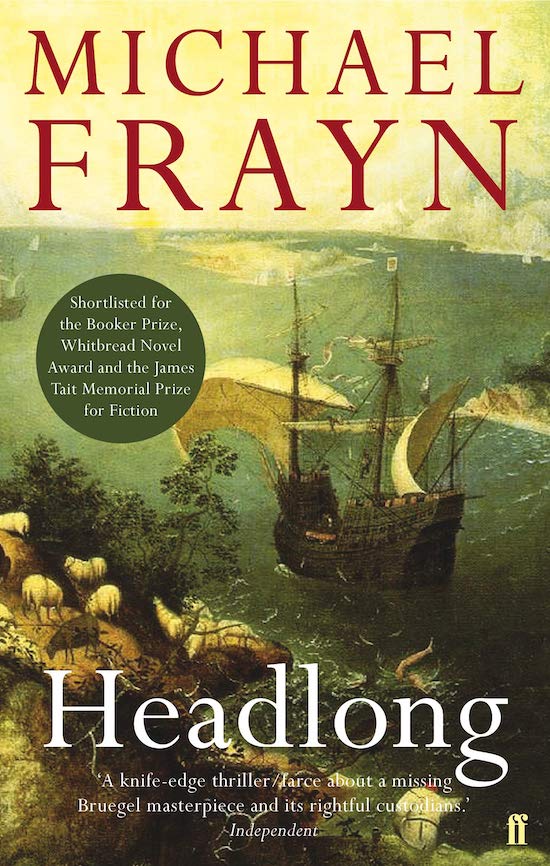
Among other absorbing books during the pandemic, I recently read Michael Frayn’s book, Headlong… for the third time. Admittedly, some years ago, it was a casual exercise in pleasure reading eventually turned into an excursion of adapting this high art farcical novel for film. The subject centres on the ostensible ‘discovery’ of a supposed lost painting from Pieter Breughel’s series The Months. In little time, it becomes a balancing act of who might be trying to pull the wool over whose eyes in trying to execute an eventual sale of the painting. Two couples of starkly different backgrounds play the main characters who in turn come to have shifting interests, pretensions and allegiances – not to mention some romantic sidestepping.
The story keeps apace at a good clip, pendulating between proportions of contemporary cheeky caper and colourful art history, all underscored with solid and sophisticated scholarship. There will be no spoiler alert here.
Much as reading the book for leisure and then for adaptation leads to numerous folded page corners and yellow highlighting, both approaches yield pleasurable moments. The third read leads to colour coding of various highlighting felt tips and a loose system of plot and dialogue sorting. In all, the story resonates for me on two professional planes: day job and night job. Edward Tyler Nahem, director of Edward Tyler Nahem Gallery, New York
David Freedberg, The Power of Images
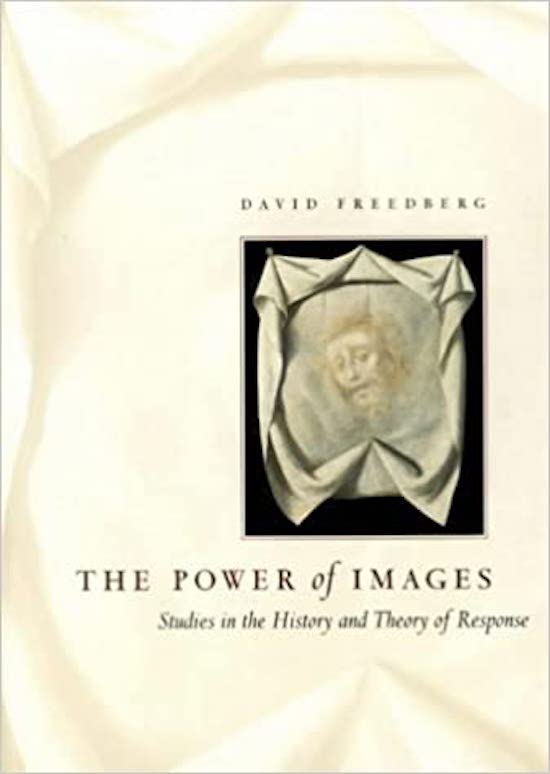
The first book that comes to mind is The Power of Images by David Freedberg. I think I encountered it when I was around 17 and several sections had a lasting impact on me and my practice. From the descriptions of image consecration rituals such as pricking a sculpture’s eyes with a pin, to chapters on waxworks, relics, votive images, witchcraft, magic, and iconoclasm, the book really excited my imagination away from art history or even art and towards potent images and a theory of response. I was much more interested in magical images and their destruction than in art itself.
A lot of my works with sound and sound recording technologies stem from my early interest in images-not-made-by-human-hands or contact relics, the idea that voice can become image, leave a trace and be brought back into speech. Aura Satz, artist
M. John Harrison, Light
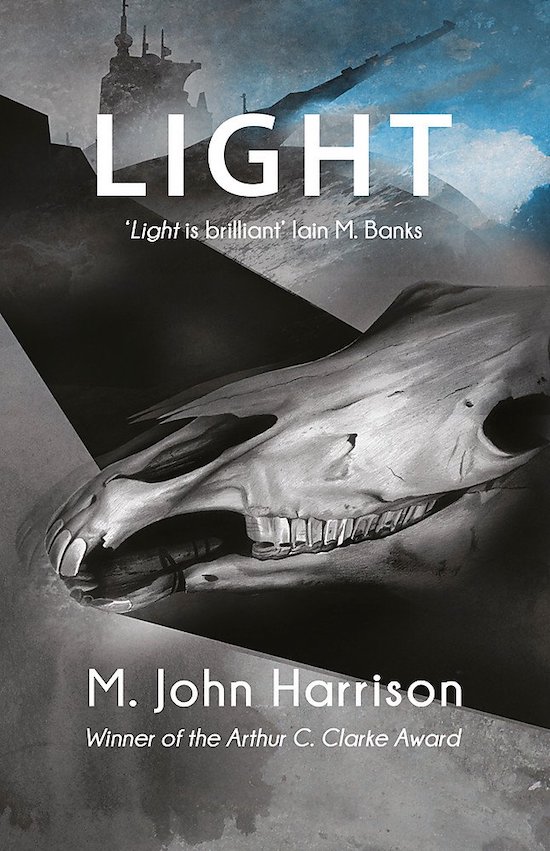
I only got around to this once lockdown hit, and it put me in an odd headspace – it is, ostensibly, a space opera sci-fi tale, but shot through with misogyny, mystery and horror. The book jumps between the present on Earth, and the future where people glean new technology they don’t understand from a void on the edge of space. It’s claustrophobic and comedic, the characters all frustrated, self-destructive dreamers. The ‘art’ of the book, if it’s there at all, is the engineering of humanity itself, the book culminating in the creation of thermodynamic chimera, a new being who can navigate all the dimensions in any shape she wishes. It’s an eventual release: out of the nerve and anxiety of the present, the future is born. Chris Fite-Wassilak, writer
Michel Houellebecq, The Map and the Territory
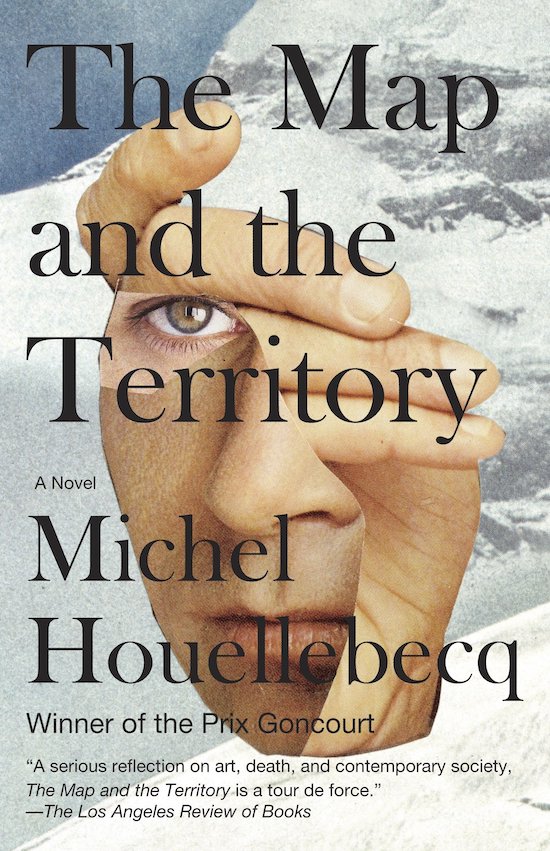
I would have to recommend Michel Houellebecq’s novel The Map and the Territory. I was impressed by the precise description of attitudes, ideas and thinking belonging to the main character, Jed Martin – a contemporary artist. The way he develops his methods of work and how he flows in and out of the artworld is actually quite real. It’s unusual in literature to get an undistorted and smart description of the contemporary art world – here is proof that the author, Michel Houellebecq, is a great observer! Krištof Kintera, Artist. Krištof Kintera: THE END OF FUN! will take place at Ikon gallery later this year, ikon-gallery.org
Robert Hughes, The Shock Of The New
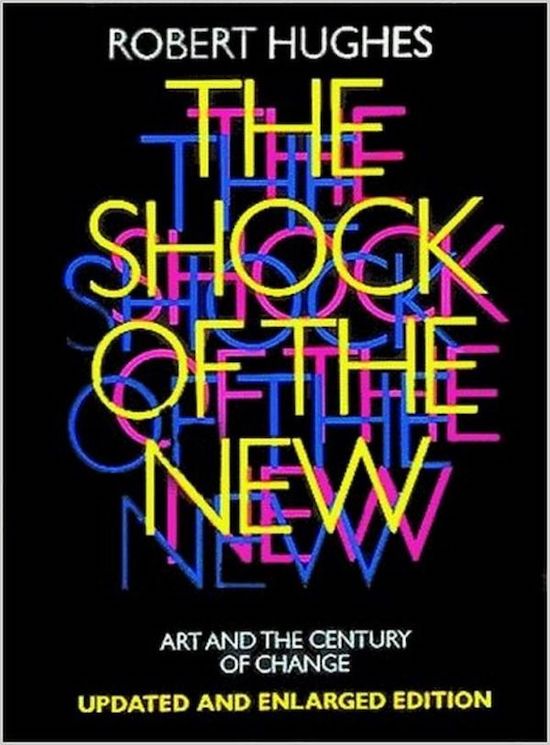
I don’t think you can consider the critic, author and broadcaster Robert Hughes at all without considering him first and foremost as an Australian. To many of his countrymen, his key work isn’t his masterful introduction to modernism, The Shock Of The New but instead, The Fatal Shore. This erudite and forensically-researched account of the transport of British working class petty criminals to Antipodean “gulags” during the rule of King George III is the definitive account of the birth of their nation to many Australians.
When Hughes and other members of the left-leaning, intellectual drinking club, the Sydney Push, such as Clive James and Germaine Greer travelled in the opposite direction away from home, to England in the mid-60s, they had to be the best… much better than the natives they planned to take on. Hughes, especially, had to excel in his incredible appreciation for art he had never actually seen with his own eyes before. His writing for The Observer and The Times eventually won him the job of art critic for TIME magazine and prompted a move to New York, where he was regarded by many as the best in his field.
The Shock Of The New started life as an eight-part BBC TV series in 1980 but it was the luminous, provocative, brilliantly written book which accompanied it that has gone on to have the genuinely long tail. I’m sure I wasn’t untypical – as a child who grew up in the 1970s in a working class family in the North West of England – in my original dunderheaded view that all modern art was a con trick played on the credulous by the rich and pretentious, but the extent to which this one book made me pull a violent and complete U-turn, feels less than ordinary. And perhaps its enduring strength lies in the fact no other book has quite captured the dazzling transformation in art (and design and architecture) as it ceased to represent what life looked like and began to represent how it was lived. John Doran, writer & editor of the Quietus
Derek Jarman, Chroma
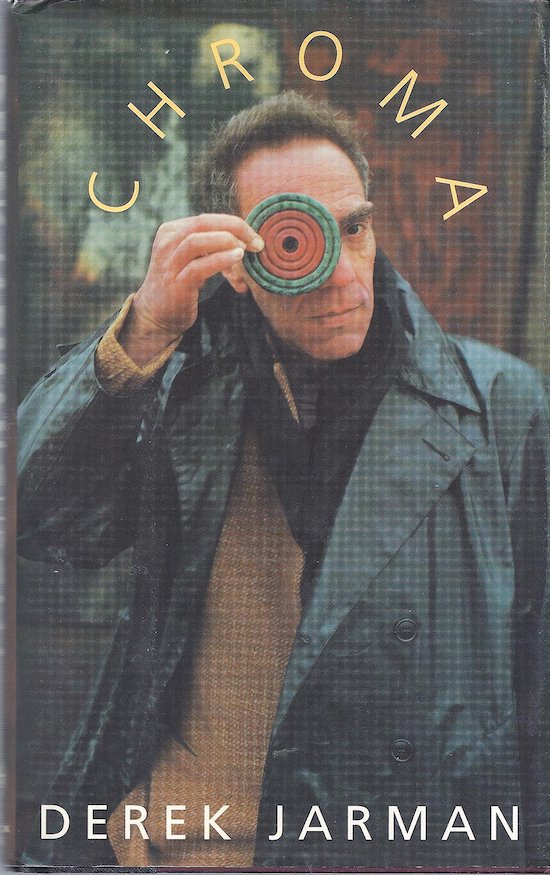
I have a hard time settling on a favourite but one book I return to for inspiration when I get stuck and need something to guide me back to a place where I can work is Chroma by Derek Jarman. He takes colours and explores what they’ve meant to others and what they mean to him, exploring them both as shades and as what they communicate to us when used in art or otherwise.
My mind flits around on lockdown and the format is a real mixture of prose, excerpts and almost poetry in places. This makes it really easy to read as part of a thinking or creative process as you can pick it up and start from any point in the book or read it in tandem with a classic art book of images.
That being said at the moment I’m also looking at The Sound I Saw, a book of photographs by Roy DeCarava a lot, which is entirely in black and white so it’s helping me envisage some colours here and there. Amah-Rose Abrams, writer
Eungie Joo et al, Haegue Yang: Melancholy Is a Longing for the Absoluteness

Prior to the pandemic I enjoyed reading all sorts of exhibition catalogues, but now, during this self-isolation period, it seems even more valuable to go through them. Ever since early March, when all exhibitions and art spaces closed, these catalogues became my main source for offering me an alternative exhibition experience – provoking my imagination. In particular, I have a number of catalogues of South Korean artist Haegue Yang. I would particularly recommend the catalogue Melancholy Is a Longing for the Absoluteness, published in 2009, which I’m currently rereading. It includes interesting essays from curators like Bart Van Der Heide, Eungie Joo and so many, and gives a glimpse of Haegue’s (relatively) early pieces and practices. Jaemin Cha, Visual Arts Curator at the Korean Cultural Centre UK
Erling Kagge, A Poor Collector’s Guid to Buying Great Art

I buy a lot of books about art theory in general, digital art in particular, and art collecting, as soon as I see new books on bookshop shelves, just recently published, I buy them. I use most of them for my researches, and read some of them during holidays. I thought about one book in particular, not directly related to art, but to art collecting: A Poor Collector’s Guid to Buying Great Art by Erling Kagge. I love his quote: "Spend time to trying to understand the complexity behind every challenging piece of art you encounter, but don’t expect to comprehend them all." Annka Kultys, director Annka Kultys Gallery, London
Robin Wall Kimmerer, Gathering Moss
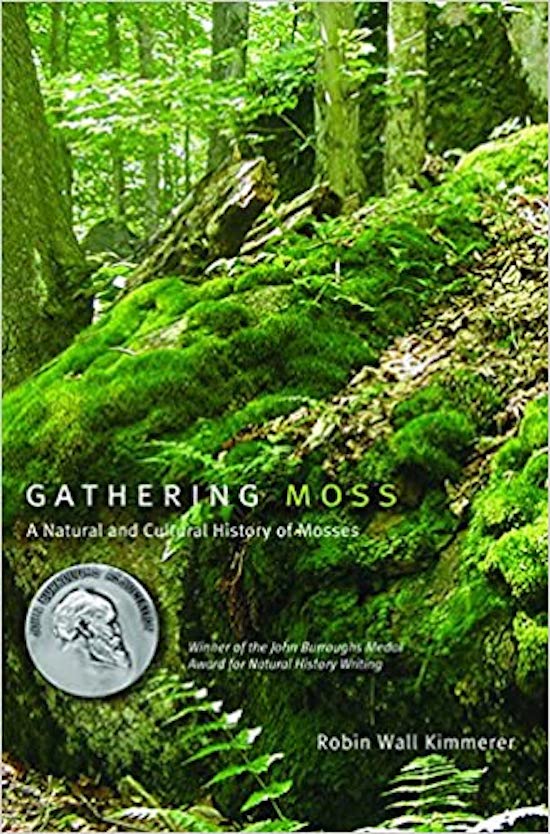
I’ve been reading this beautiful book about moss by Robin Wall Kimmerer, a Native American scientist, mother, teacher and writer. Her scientific training and knowledge of plants from her Potawatomi heritage create a unique lens on the simple landscape of moss, teaching us how to look and watch; the mind, body and spirit against empirical scientific information.
It’s a perspective that interests me as it opens up a narrative about our relationship with the world around us. Reading this has made me stop to wondrously admire any patch of moss I come across, and I suppose this connects back to art in a more personal way for me, to form a part of my current thoughts on where our landscapes are today whilst I think about foraging and germinating new plants to use in artworks. Lilah Fowler, artist
Michael Lobel, Fugitive Artist: The Early Work of Richard Prince, 1974-77
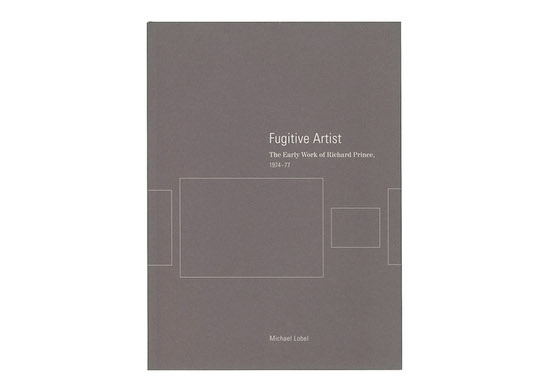
Exhibition catalogues did not always have pictures in them. I keep a small collection of such examples from back when written descriptions provided a popular alternative to image reproductions. Today, it is hard to imagine a catalogue without installation shots, work illustrations and archival footage. Yet Michael Lobel’s excellent publication, Fugitive Artist: The Early Work of Richard Prince, 1974-77, proves there are still alternatives.
Fugitive Artist was published to accompany an exhibition that Lobel organised at the Neuberger Museum of Art in 2007. The project focused on Richard Prince’s career debut; a period the artist would later edit out from his biographical record. Lobel however, insisted that once artworks are put on display the artist no longer has the authority to withdraw them from public knowledge.
He managed to source a handful of works from art dealers who kept these on stock and wrote a compelling essay on the development of the artist’s practice. Prince, in turn, denied him permission to reproduce images of his works in the publication. He hoped, I suppose, that this would be the end of it, but Lobel embraced the challenge. He outlined the empty image placeholders wherever the original reproductions were meant to appear in the book, adding captions and providing detailed descriptions that now serve as a valuable resource. The result is an inspiring and eloquent gesture in the absence of pictures. Yuval Etgar, Director of Research and Exhibitions at Luxembourg & Dayan, London
Irish Murdoch, The Nice & The Good
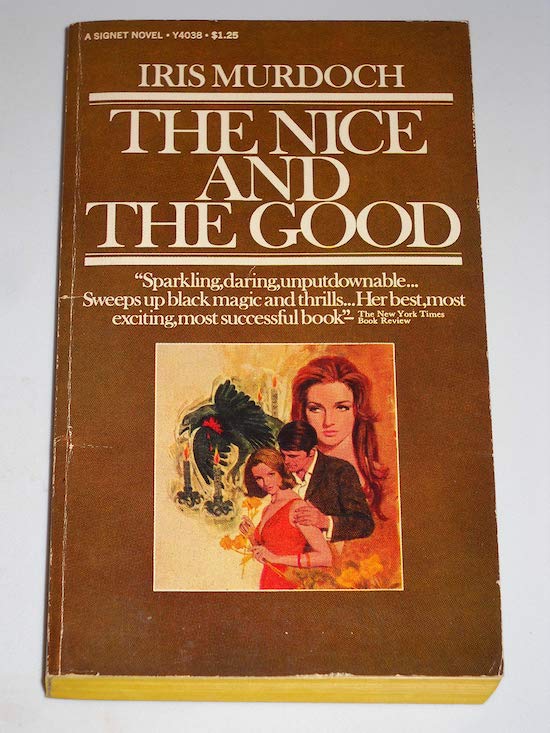
I read it years ago in a post-malady post-marital slumber of relief and aftershock on a pebbled beach that came and went with tactful waves.
I barely remember it as anything but excellent.
A metaphysical caricature of bourgeois melodramas spun in a net of love-trigonometries.
One of the figures of the novel is a pale ascetic artist, who is having an affair with a condescending older man. He is about to break her heart.
Before speaking, his view falls onto the small not-quite sculptures with pierced coloured interiors, that she makes from scavenged junk and pulped newspaper. Her room holds nothing intimate or amiable other than these deviant miniature identities that don’t quite fit an order, orderly placed on the impersonally bare windowsill.
She destroys them before they can reach permanence.
While the characters of the novel came and went in service of points to be made, parables to be told or narrative to be woven, these inscrutable blissfits made from the leftovers of previous existences and amalgamations of printed events anchored themselves in my drifty mind as precise unstable for-instances, floating over all that had to come into being and its why.
They are not intended for contemplation.
Much of what I’ve made since has in retrospect been in memoriam to my washed-out memory of what I felt for these perfectly unownable puncta, more complex than any of the subjects that worked on and within the plot of my beach-read.
I put the book down and watched two pastel coloured hermit crabs fight or fuck (I haven’t got the insight) for over an hour.
This overlapping double scene is either mystifyingly banal or down-played game-changing, who’s to say and who’s to know. Sophie Jung, artist
Georges Perec, Three
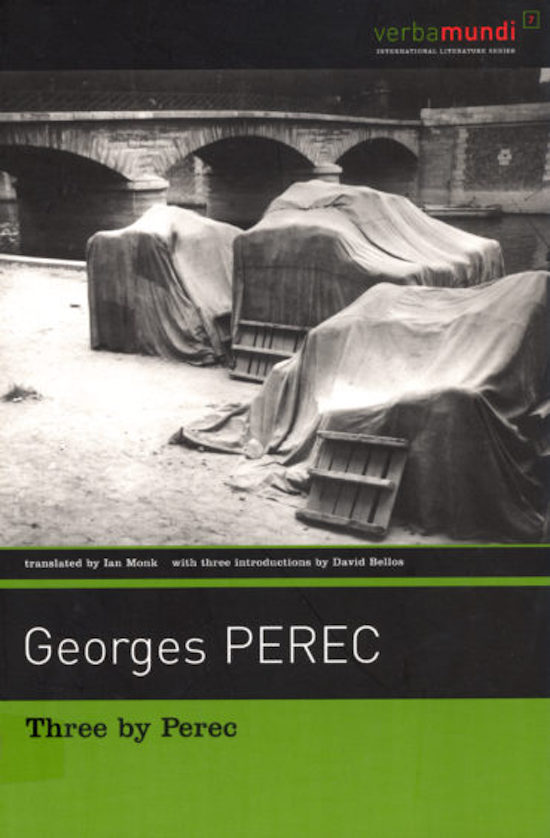
‘A Gallery Portrait’ (one of three short novellas collected in the book Three by Georges Perec) is a honeycomb of potentialities; crystalline in structure in the way it seems to generate sub-stories and folds over representations, and representations.
Typically for Perec, an OuLiPo writer, the novel is a vehicle for a kind of game of potentials narratives and especially scale; the minuscule obsessive nature of descriptions of visual detail, to the extent that it becomes magnified or almost molecular. Reflections, mirrorings, translations of representations – tongue in cheek and immensely deep and slow.
I read it in my early 20s in Greek, in a wonderful translation by Achileas Kyriakides and its unique sense of three-(or more if possible to imagine)dimensionality comes back often, although i havent re-read it recently. Athanasios Argianas, artist
Sebastião Salgado, Genesis
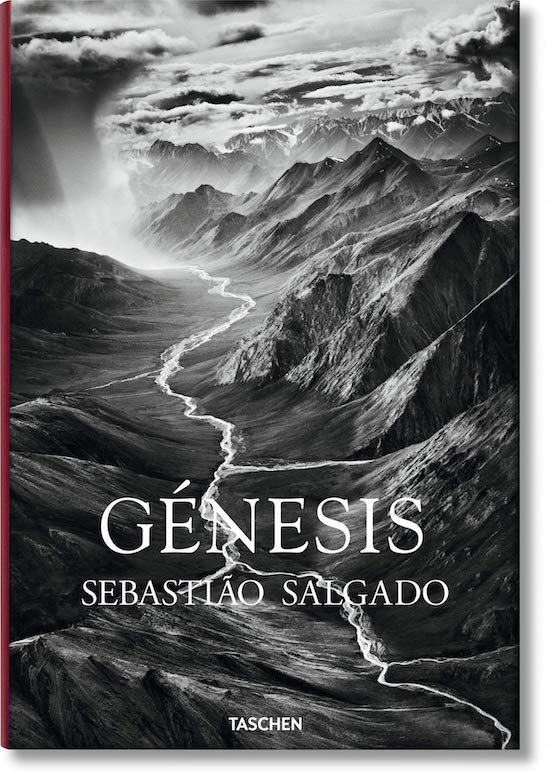
My all-time favourite is a stunning photo-book “Genesis” featuring works by Sebastião Salgado. His truly remarkable images from the most remote corners of our planet serve as a reminder of its unspoiled natural beauty. Sebastião takes you on a journey to discover immense biodiversity in largely untouched deserts, in mountain ranges, in the frozen lands of the Antarctic and the north of the planet, as well as showing people that still live untouched by “civilization”. What makes the experience even more special is that these jaw-dropping images are followed by stories told by the artist of his personal experiences and impressions of being there, so it makes you feel that his is taking you on this journey together with him. Agniya Mirgorodskaya, Founder & Comissioner of the Riga International Biennial of Contemporary Art (RIBOCA). The online public programme for the 2nd edition of Riga International Biennial of Contemporary Art (RIBOCA2), and suddenly it all blossoms, can be accessed here.
Peter Schjeldahl, Hot, Cold, Heavy, Light
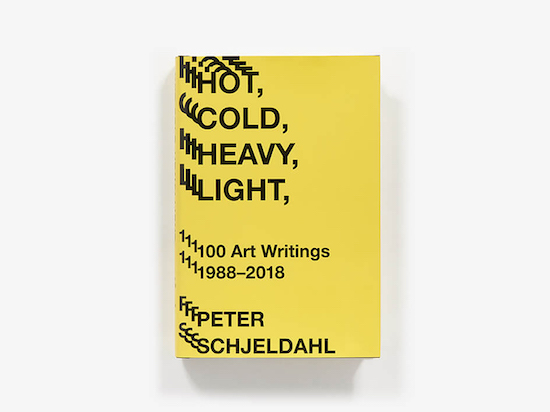
Hot, Cold, Heavy, Light is a collection of 100 writings published this year by Peter Schjeldahl, art critic for the New Yorker. Schjeldahl is 78 and very ill. An article he wrote in December 2019 called ‘The Art of Dying’ begins: “Lung cancer, rampant. No surprise. I’ve smoked since I was sixteen…”
This simple yet brutal honesty typifies his reviewing style. Many pieces here are unapologetic mash notes with deft caveats, minor diversions off the critical motorway with the very occasional u-turn (as with his shift on Anselm Keifer) before a return to rapture. He’ll make you fall in love again with Velázquez, De Kooning, Karen Kilimnik, and about eighty others. Not that he’s averse to a well-aimed kick. He allows you to laugh at a shared prejudice: “Francis Bacon has long been my least favourite great painter of the twentieth century”. He can be delightfully flippant about allegory, dismissive about psychoanalyzing artists on the basis of their work.
Schjeldahl told Jarrett Earnest that he thinks of art as being “like espionage, ‘walking the cat back’ – why did that happen, and that?’ Schjeldahl is the art world’s John le Carré; his phrasing is supremely crafted, his tracking insightful and he’s great fun to read. John Quin, writer
Jane Stevenson, Edward Burra: Twentieth-century Eye
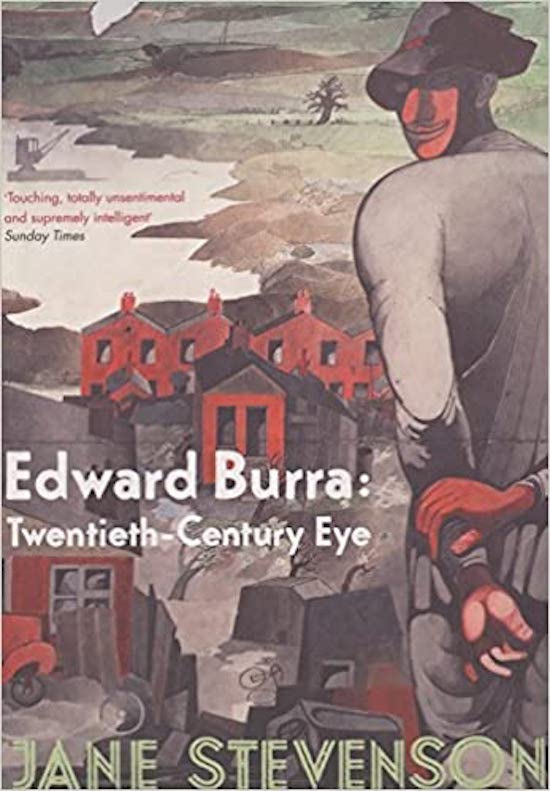
I bought this book after watching Andrew Graham-Dixon’s documentary on Burra a few years back (a programme which openly referenced Jane Stevenson’s work). Stevenson has written a pretty commanding survey of his life, able to clearly signpost the technical and emotional developments in a wider narrative of artistic British life of the 20th century. Her title is very prescient too; as Burra really was a watcher, able to catalogue the wyrd and offbeat with brilliant clarity. In any case there aren’t that many things published on him outside of catalogues or the odd reminiscence by acquaintances such as Anthony Powell or Billy Chappel.
Burra’s work has always fascinated me, mainly for its ambiguities and allegorical nature. He’s one of those artists whose work gets better and better as he progresses. I think the first time I ran across one of his pictures was in the late 1980s, seeing a print of one of his ghostly landscapes (a cloud formation with eyes), hanging – terrifyingly in retrospect – above the bed of my sexually deviant landlord in Newcastle upon Tyne. His ‘Blue Baby’ was the first I saw “in the flesh” (I think at the IWM), another arresting image full of menace and violence. Typically for Burra it manages to skip being overly pedantic by way of its grotesquely camp nature. (For my money the balloon-like figure somehow brings to mind another Blue Baby of that time, Herman Goering.) A very British reaction to being bombed? Maybe.
As said, I’m fascinated by him: for his command of watercolour (which he’d mix with his own spit) his stoicism, his intelligence hidden behind his love of gossip, his ability to be present and absent; an unfussy and fiercely private man who delights in show… there is always something contradictory about Burra. But something also very buoyant, and Stevenson gets that perfectly. Richard Foster, writer
Edmund de Waal, The Hare with Amber Eyes
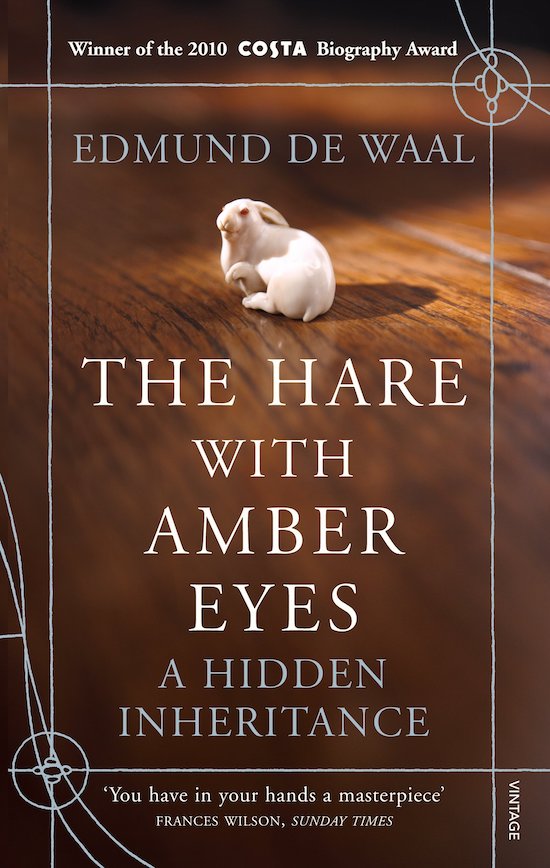
In this new world order with the Covid-19 scourge, there is one particular book that I find comforting – Edmund de Waal’s The Hare with Amber Eyes (Farrar, Straus and Giroux, 2010). The book talks about the importance of art and the capacity and resilience of people in difficult times. It tells the story of a Jewish banking family, the Ephrussis, who were one of most influential families in Europe before World War 2. At the same time, the book becomes a chronicle of our recent history.
The narrative begins in Odessa, travelling to Vienna and Paris before and after the War. At the centre of the novel are these small art objects, namely some Japanese netsukes, which survive the Holocaust whilst hiding in the pocket of the family’s loyal servant. The netsukes become the only objects left from the vast empire of the Ephrussi family.
Before the virus, I had intentions to travel to Vienna, to see the exhibition in the Jewish Museum about the Ephrussi family. But everything can change in an instance, as proven in Edmund de Waal’s novel. Nothing except, art – maybe – has permanency. Marja Sakari, director of Ateneum Art Museum, Helsinki. Inspiration – Contemporary Art & Classics is at Ateneum Art Museum, Finnish National Gallery, Helsinki, from 18 June – 20 September 2020 ateneum.fi
Peter Weiss, The Aesthetics of Resistance
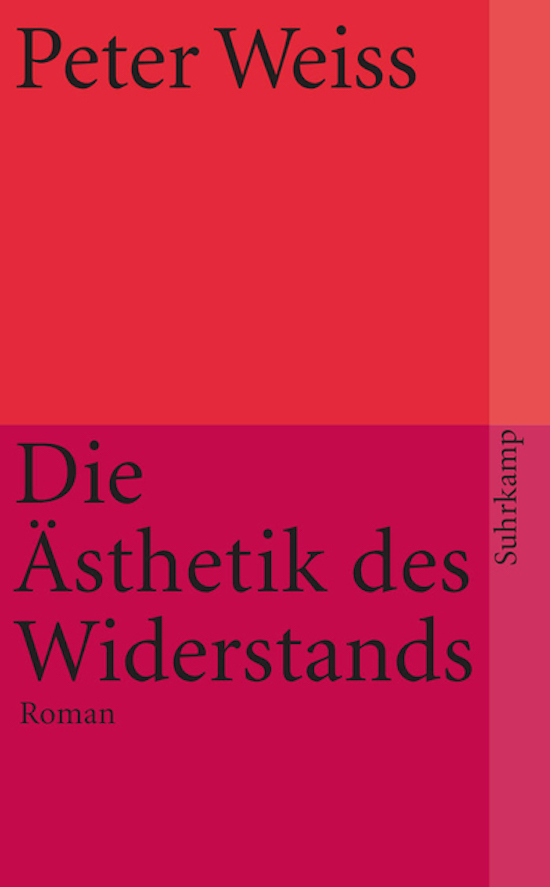
The book interprets many great works of art and history while discussing the post-war Left, a huge effort from Weiss into the depths of the art-politics ocean. Most important for me: its descriptions, commentary and discussion of The Great Altar of Pergamon and the Gigantomachia frieze (now located at Pergamon Museum Berlin) opened many horizons for me when working on my Bergama Stereo installation, an interpretation of the same altar and frieze, but with sound, architecture and performance in my case. Cevdet Erek, artist
Patrick White, The Vivisector
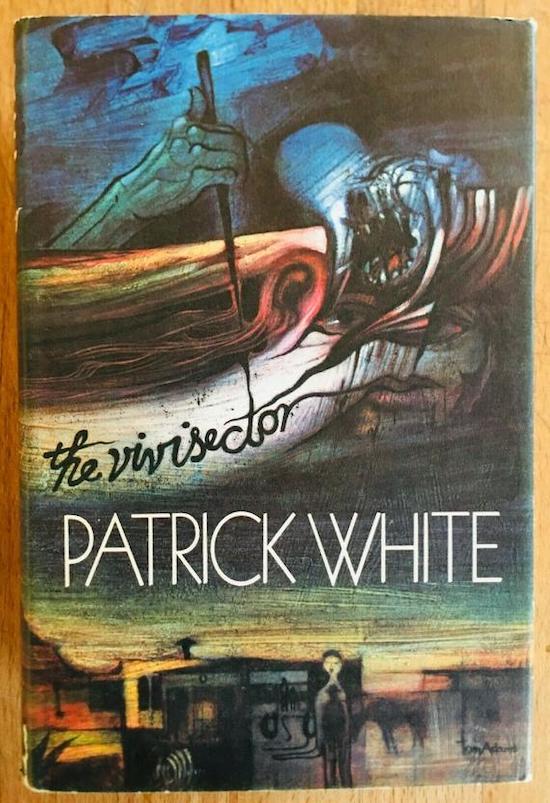
Patrick White’s 1970 novel The Vivisector is often described as a depiction of how an artist (or writer – White used the novel as a self-eviscerating takedown of his own creative faculties) draws on the flaws and vulnerabilities of those people close to him, in order to create their art – art inspired by the psychological and physical weaknesses of others. A more interesting aspect of the novel, for me, is its study of how the artistic sensibility takes root in the individual during childhood (White is one of literature’s greatest writers of children and childhood).
The first third of the book focuses on the early life of Hurtle Duffield, who becomes a rich and famous painter as an adult. In White’s mellifluous way he shows how the duties and the oddities of life are imbued with a potent mysticism when viewed through the artist’s lens: his bizarre family situation; early sexual desire; his sister’s disability; his experiences with jackaroos in rural Australia; and later on, his affair with a prostitute. One of the book’s most memorable motifs is Hurtle drawing his grim ‘mad eye’ on the walls of his home. Barnaby Smith, writer

